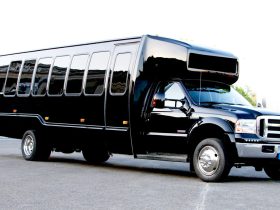Executive retreats should feel purposeful, premium, and effortless. Hosting yours on the water checks all three boxes: it breaks routine, sparks fresh thinking, and delivers an experience that feels exclusive without being stuffy. The key is planning with intention—designing a day that balances strategy, connection, and decompression. Here are six stress-free tips to make your waterfront retreat run like a well-captained ship.
1) Start with outcomes, then reverse-engineer the agenda
Before you book anything, define the outcomes in one sentence: “Leave with a 90-day plan,” “Align on product priorities,” or “Strengthen cross-functional trust.” Use this as your filter for every decision—timing, activities, seating, even music. Build the agenda backwards from the moment you want to end on (e.g., a crisp action recap at sunset). Time-box each segment, leave buffer between transitions, and cluster “deep work” early while energy and focus are highest. Remember: the water relaxes people; your structure keeps momentum.
2) Curate spaces for both focus and flow
A boat can be more than a floating lounge. Carve the deck into functional zones so the day naturally breathes.
- Strategy zone: Tables/chairs in a U or partial circle for visibility and discussion.
- Breakout nooks: Two to three small areas for triads to workshop ideas.
- Recharge corner: Shade, nonalcoholic beverages, light snacks, and quiet music for micro-breaks.
- Content corner: A pre-designated spot with the best backdrop for quick video recaps and leadership messages.
Defining zones reduces the “Where do we go now?” friction and keeps the group together without feeling crowded.
3) Orchestrate energy with a three-act structure
Great retreats are scored like a soundtrack. Think in three acts:
- Act I: Set & Prime (Arrival → First Hour). Welcome mocktails, light breakfast bites, name tags with roles/pronouns (even if everyone “knows” each other), and a short opener that sets expectations and outcomes. Keep slides minimal.
- Act II: Decide & Build (Midday). Facilitate two focused working blocks with a structured framework (RICE scoring, DACI roles, or “Stop/Start/Continue”). Use 10-minute stand/walk breaks on deck between blocks to reset attention.
- Act III: Celebrate & Commit (Late Afternoon → Sunset). Shift to reflection, appreciations, and a crisp readout of decisions, owners, and deadlines. Close with an unfussy toast and free time to mingle and capture content.
4) Make logistics invisible (your future self will thank you)
Operational details are where stress creeps in—so front-load the solves:
- Transportation: Provide a single meeting point and one group transfer to the dock. The fewer hops, the fewer late arrivals.
- Dietary & comfort: Collect preferences in advance (gluten-free, nonalcoholic, caffeine options). Pack sunscreen, motion-friendly ginger chews, light blankets for breeze, and a few phone chargers.
- Tech & tools: Waterproof sleeves for devices, a compact PA or portable speaker, a fold-flat whiteboard, and printed agendas (half-sheet) to minimize “what’s next?” questions.
- Roles: Assign a facilitator (runs the room), a timekeeper (protects the agenda), and a scribe (captures decisions/action items). When everyone knows their lane, you can relax.
5) Blend connection with light structure (no cringey icebreakers)
Executives don’t need trust falls. They need low-friction prompts that reveal context and unlock collaboration:
- Two-beat intros: “What’s your team solving this quarter?” and “What help do you need from peers?”
- 5×5 Lightning Wins: Five leaders, five minutes each—one win, one lesson, one unblock request.
- Walk-and-talks: Pair up for 12 minutes on deck to discuss a focused prompt (e.g., “What must be true for Q1 to succeed?”). Rotate once.
- Gratitude ring: One line each recognizing cross-team support. It’s quick, disarming, and culture-positive.
These formats create meaningful interaction while respecting time and seniority.
6) Land the plane with a “Decision Docket” and day-zero follow-through
The difference between a nice day and a valuable retreat is closure. End with a Decision Docket: a one-page sheet listing each decision, owner, due date, and first next step (“send brief,” “book kick-off,” “draft spec”). Snap a photo and share it instantly to the leadership channel or email thread before you disembark. Within 24 hours, send a brief recap with attachments (notes, photos, slides) and calendar holds for critical follow-ups. Momentum fades fast—capture it while spirits are high.
Pro moves that elevate the experience
- Right-sized sound: Keep music at “conversation-forward” levels until the work is done; save the volume for the final hour.
- Nonalcoholic excellence: Offer premium zero-proof options alongside beer/wine; executives appreciate clarity during strategy blocks.
- Photo moments, intentionally: Schedule two minutes at peak light for a group shot and leadership candids. These assets pay dividends for employer brand and internal comms.
- Weather-aware planning: Confirm covered areas and a wind-aware route. A light layer of resilience makes the day feel calm and considered.
A waterfront executive retreat isn’t just a change of scenery; it’s a change of cadence. By anchoring to outcomes, designing purposeful spaces, and smoothing logistics, you’ll create a day that feels both high-level and human. The calm of the water lowers defenses, the structure raises the signal, and the result is a leadership team aligned on what matters next. If you’re ready to turn strategy into a memorable, momentum-building experience, consider tiki boat corporate events as your floating boardroom—and let the horizon do the heavy lifting.












